Choosing the right flooring for a chicken run
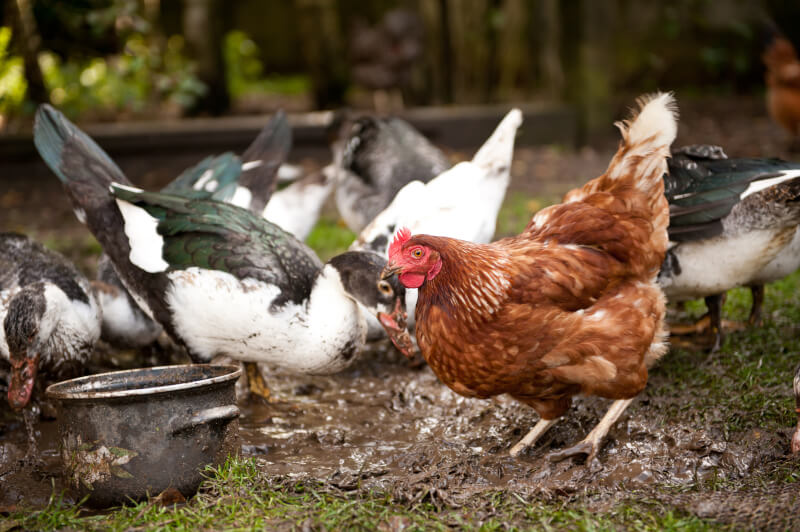
Chicken run flooring options
There are a few options when choosing suitable flooring for a chicken run. For example, if the run is on a lawn and portable, it can be moved around the garden allowing the grass to recover in worn areas. A run that remains in one position, or where there is no lawn, may become a bit of a quagmire after some rain. This makes it difficult to clean and leaves chickens with very muddy feet and legs. Here are a few of the options that are widely used:
- Sand
- Wood Chippings
- Pea Gravel
- Wood Shavings
SAND
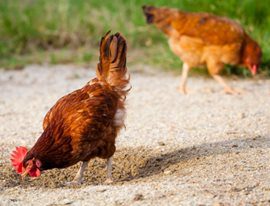 Coarse sand is relatively inexpensive and droppings are easy to clean from it, most simply by using a cat litter scoop if you have a relatively small area. Some of the sand can wash away, or get into the soil below, unless contained, but as the sand disperses it can be topped up. Many chicken keepers see sand as an easy option and rake the droppings into the sand rather than ‘poop scoop’ so that they break down over time. They then they remove the top layer every six months and top it up.
Coarse sand is relatively inexpensive and droppings are easy to clean from it, most simply by using a cat litter scoop if you have a relatively small area. Some of the sand can wash away, or get into the soil below, unless contained, but as the sand disperses it can be topped up. Many chicken keepers see sand as an easy option and rake the droppings into the sand rather than ‘poop scoop’ so that they break down over time. They then they remove the top layer every six months and top it up.
However, as the climate changes and the UK experiences heavier or more frequent rain showers, some keepers complain that in uncovered runs sand works into the mud too easily if a thin layer is used. It is also easily dragged around on wet shoes or wellies, so the use of sand has some keepers a little divided.
WOOD CHIPS
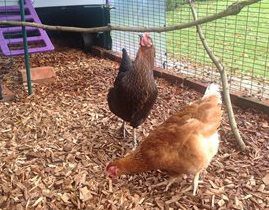
Wood chippings become increasingly popular due the clean, light appearance, free drainage, being almost dust-free and most importantly, chickens love to scratch around in them!
Soft and hard wood chippings – or play chips as they are sometimes known – are easily cleaned and not quickly trampled into the mud. One of the key reasons they are used in animal enclosures and hen runs is that they are excellent at preventing muddy feet.
Wood chips are natural and will eventually break down over a long period of time, so just need a top up once or twice a year depending upon the depth they’ve been laid. If the chicken run is relocated the chippings can simply be dug into the soil (if the chippings are not being moved too) as they will break down over time and provide nutrients to the soil.
The chippings are produced using the white wood of trees and shouldn’t be confused with bark chips; bark chippings or mulch should never be used in runs or enclosures as it can go mouldy and produce spores which can lead to respiratory illness in chickens. It is advisable to rake or turn wood chips from time to time, especially in damp areas, to avoid the potential for mould development.
PEA GRAVEL
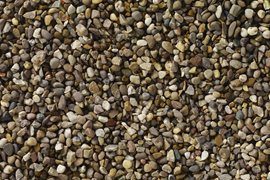
A rounded gravel such as pea gravel can be used, but using a weed membrane underneath is not recommended. Droppings will be washed through to the bottom by the rain or trampled in which can become quite smelly; it is far better to allow water free drainage through to the soil below.
Some chicken-keepers believe that their chickens don’t like walking on pea gravel, but it is a longer lasting option to wood products – especially if there are no plans to reposition the run.
WOOD SHAVINGS OR STRAW
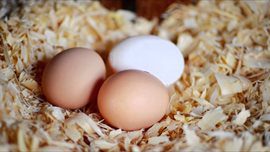
Wood shavings and straw are both great when used as bedding for chicken coops, but when used as a flooring in an uncovered run, wood shavings and straw can become soggy and work into the ground fairly quickly making the run difficult to clean; that’s if they don’t blow away first!
SUMMARY
Finding the best flooring can be a little bit of ‘trial and error’ as it’s not only about what we humans would prefer to use but also about the chickens’ wellbeing and comfort. The most important things to remember when trying to avoid a muddy run, are to ensure it isn’t located at the bottom of a slope, try to make the area as level as possible and whether using wood chips, sand, gravel or another option, be sure that the flooring is free draining.

Our patented Twinstak stacking system allows you to order two of bags of a single product on one pallet, saving you extra pallet delivery costs, and helping the environment.
Saving of
up to £72
for these
combo’s
Find Us
Topsoil Direct Ltd
Breighton Airfield,
Bubwith, Selby,
North Yorkshire,
YO8 6DJ
Contact Us
Tel: 01430 631111
Email: info@topsoil.co.uk
VAT No. GB 386 2904 66 | Company Reg No. 03460390 | © Copyright 2024
-
Maestro -
Mastercard -
PayPal -
Visa
Privacy Overview
| Cookie | Duration | Description |
|---|---|---|
| cookielawinfo-checkbox-analytics | 11 months | This cookie is set by GDPR Cookie Consent plugin. The cookie is used to store the user consent for the cookies in the category "Analytics". |
| cookielawinfo-checkbox-functional | 11 months | The cookie is set by GDPR cookie consent to record the user consent for the cookies in the category "Functional". |
| cookielawinfo-checkbox-necessary | 11 months | This cookie is set by GDPR Cookie Consent plugin. The cookies is used to store the user consent for the cookies in the category "Necessary". |
| cookielawinfo-checkbox-others | 11 months | This cookie is set by GDPR Cookie Consent plugin. The cookie is used to store the user consent for the cookies in the category "Other. |
| cookielawinfo-checkbox-performance | 11 months | This cookie is set by GDPR Cookie Consent plugin. The cookie is used to store the user consent for the cookies in the category "Performance". |
| viewed_cookie_policy | 11 months | The cookie is set by the GDPR Cookie Consent plugin and is used to store whether or not user has consented to the use of cookies. It does not store any personal data. |

